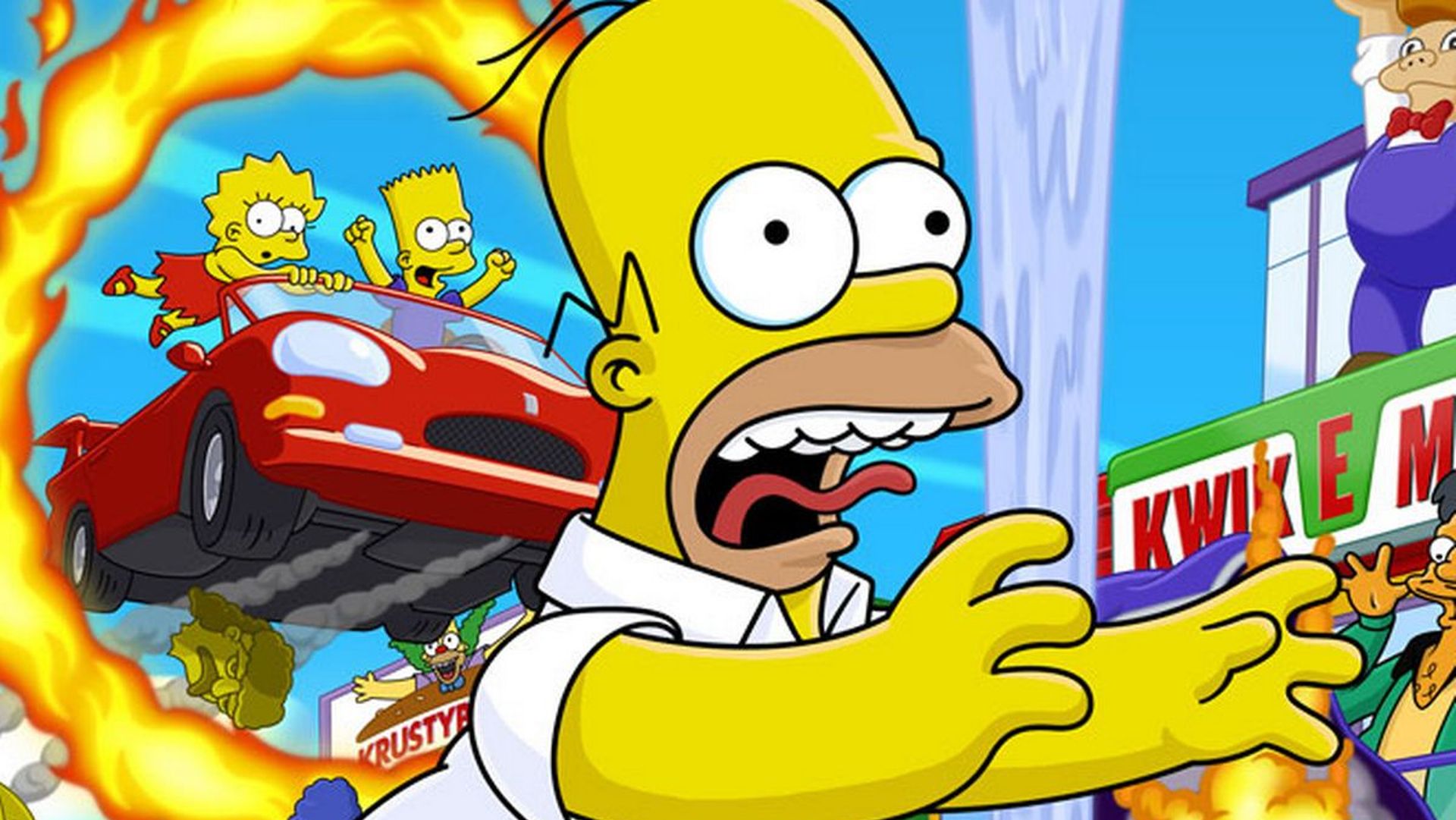
(Image credit: Radical Entertainment)
I have a deep fondness for The Simpsons: Hit and Run. This love stems from childhood, lingering to this day. At 12, I even gifted my cherished copy of the game to a crush, a decision I regretted almost immediately as the case left my hand; not only was it an awkward gesture, but it also deprived me of my favorite open-world comedy. The game remains beloved by many, sparking online debates over the necessity of a remake, especially after an impressive fan rebuilt it from scratch. Despite this, as I revisit The Simpsons on my old PS2, I find myself resisting the idea of a remake. Perhaps, if we look past nostalgia, you would too.
Returning to Springfield for the first time in decades, I braced for its early 3D charm and the mannequinesque expressions of characters. Surprisingly, it was the primitive mechanics that stood out. The driving, reminiscent of bumper cars, feels solid yet basic by today’s standards. Once out of the car, characters can only run, double jump, or kick – a limited skill set to sustain interest in a twenty-hour game. Hit and Run embodies 2003 down to its very core, both its biggest flaw and its greatest charm.
The lack of complexity extends further, with no weapons, few mobility skills, and missions that often boil down to “drive here before time runs out.” Keep in mind, Grand Theft Auto 3 was already two years old, and San Andreas was on its way. Even back then, it wasn’t cutting edge, and now, in 2025, it can feel like a forgotten beta version of a game. Yet, despite its simplicity, Hit and Run remains entertaining. Its draw lies in the delightful bounciness of driving and its humor, boosted by nostalgic references. A comedic highlight is Grandpa’s caffeine-induced rant about fighting Nazi raccoons, with dialogue that wouldn’t seem out of place on Conan’s show.
Considering a remake leads to the inevitable question: is it worth the effort? Resident Evil 2’s 2019 remake serves as a prime example of such endeavors, staying true to its roots while enhancing its original vision. In contrast, The Last of Us Part 1 feels like corporate deja vu. Hit and Run, with its simple but complete form, would lose its essence if altered. Introducing new mechanics would fundamentally change its nature. Moreover, while its polygonal depictions may seem crude, they align with Springfield’s geometric style.
There are aspects time has not treated kindly, such as an entire chapter focused on Apu, a role modern actors might shy away from. Hearing Hank Azaria voice Apu using outdated terms or struggling with his accent is… a reminder of another era. While a remake might consider omitting this, the Apu chapter constitutes a significant portion of the game. Its removal would notably diminish the experience.
The rights to Hit and Run remain unclear, considering it was initially published by Vivendi, which merged into Activision-Blizzard in 2008. Any initiative to revisit this game would likely require Fox or Disney’s approval, further complicating the odds of a remake or sequel. A sequel was already rejected once without clear reason.
Instead of a remake, I would welcome a straightforward port to modern consoles, possibly enhanced with updated textures. This would honor the game’s legacy and contribute to historical preservation, a practice the industry should prioritize. But a ground-up reimagining? No, that would likely upset the unique qualities that made it a highlight of the PS2 era. Although it missed our best PS2 games list, if I had written it, Hit and Run surely would have made the cut.